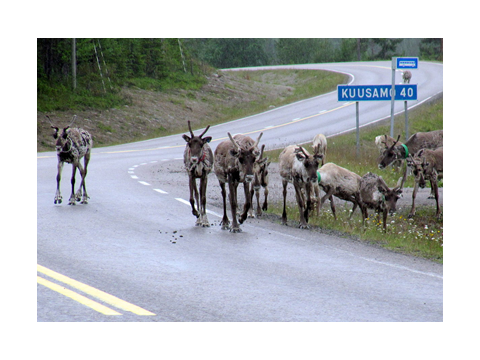ENI CBC Kolarctic programme supports the project which uses disruptive technologies to address the needs of the Barents Euro-Arctic Region.
- 05 January 2022

Blockchain, Big Data and other disruptive technologies are not easy to understand. However, the DIT4BEARs project not only navigates successfully between them, it also provides for knowledge exchange between students and professionals in Sweden, Norway, Finland and Russia. The core project idea is to generate and use modern technological solutions for addressing challenges specific to the Arctic Region. By focussing on real life use cases and the development of tangible solutions, the project helps to improve economic and social conditions in the arctic circle.
In Finnish Lapland, around 4000 reindeers annually get lost in traffic accidents. Lapland UAS DIT4BEARS researchers therefore made visits to reindeer herders and interviewed them on as movement and activity of reindeers. Using their information, a new scalable tracking system has been developed that already saves herders time and money in tracking down their reindeers.
In Russia, an online IT school taught participants about the history, functioning and use cases of blockchain technology. The big finale was a case battle between students, with the winner being awarded an internship in the Russian IT company RUSSOFT to further develop the idea.
In Sweden, the project promoted gender equality in IT by hosting seminars that inspired young women to take up a career in the field. Norway, in fine, tackled the subject of weather conditions on winter roads. The Norwegian team launched a hackathon for IT students to develop mobile apps predicting sudden weather changes.
Those are just some examples of the ways the project addressed the needs of the arctic region. To learn more about the projects, visit the project website.
